
How to Use LIPO Battery: Examples, Pinouts, and Specs
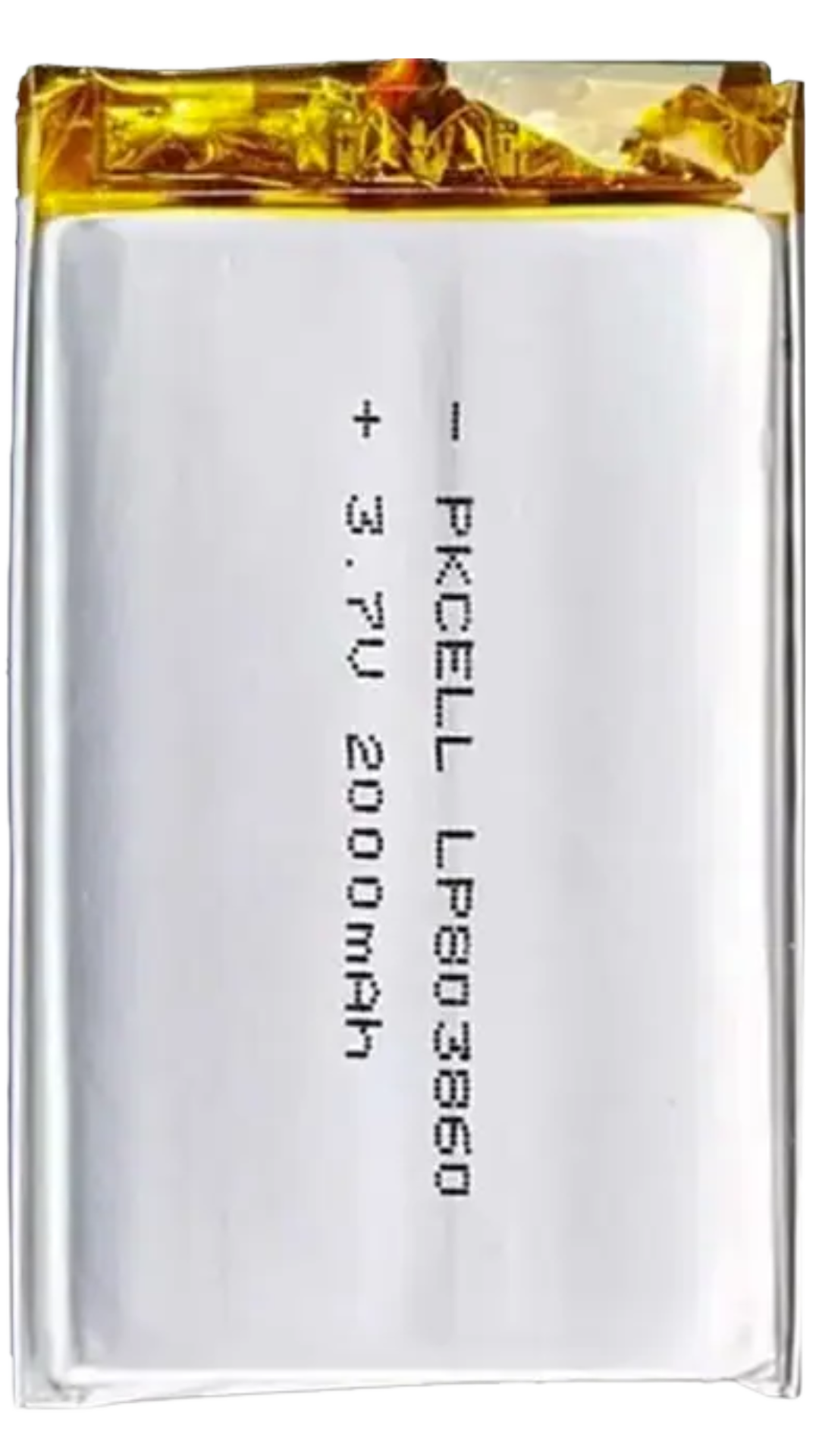
 Design with LIPO Battery in Cirkit Designer
Design with LIPO Battery in Cirkit DesignerIntroduction
The PKEnergy LIPO Battery (Part ID: LIPO) is a high-performance Lithium Polymer (LiPo) rechargeable battery designed for applications requiring lightweight, high-energy-density power sources. Unlike traditional batteries, the LiPo battery uses a polymer electrolyte, allowing for flexible shapes and sizes while maintaining excellent energy storage capabilities.
Explore Projects Built with LIPO Battery
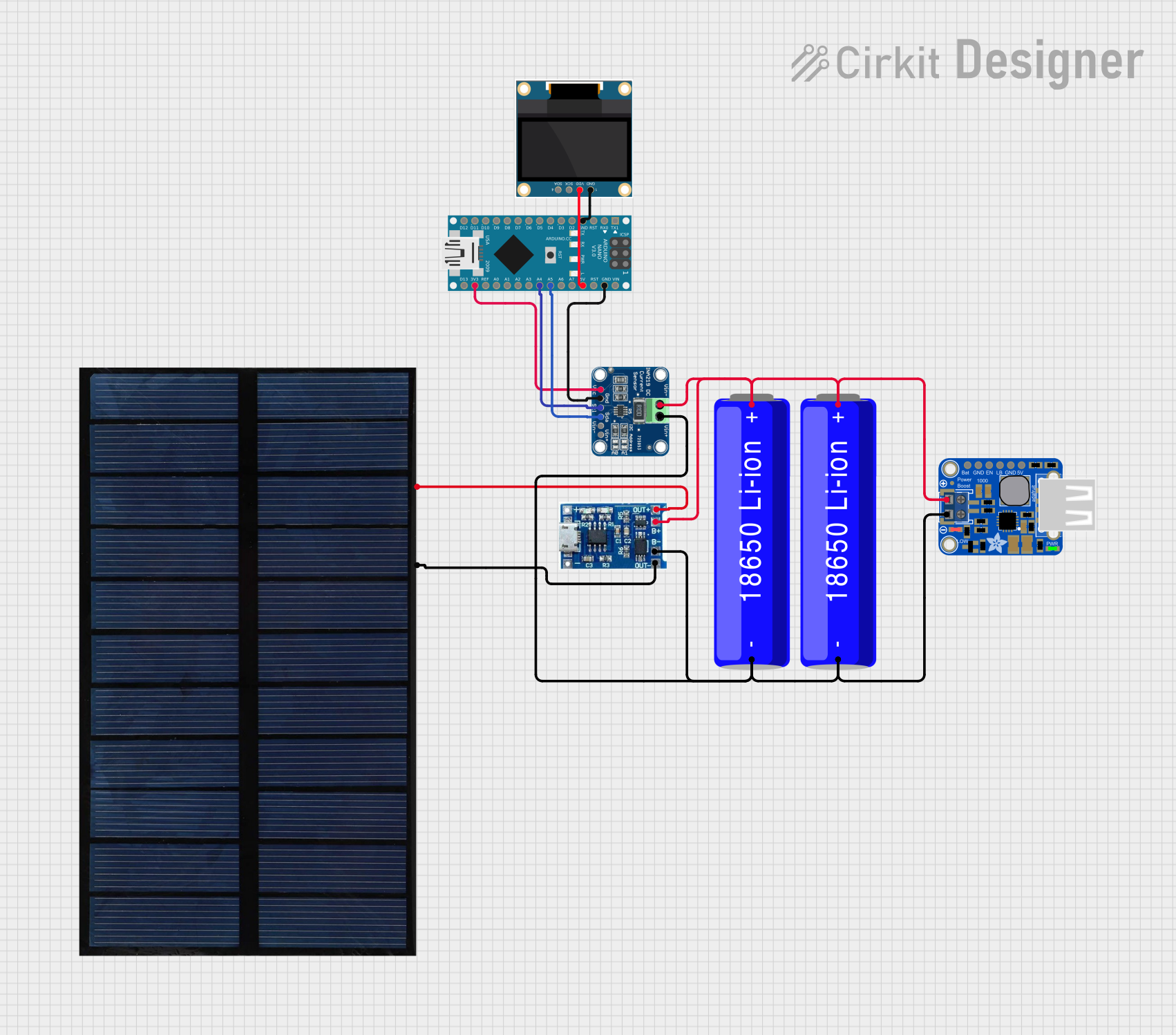
 Open Project in Cirkit Designer
Open Project in Cirkit Designer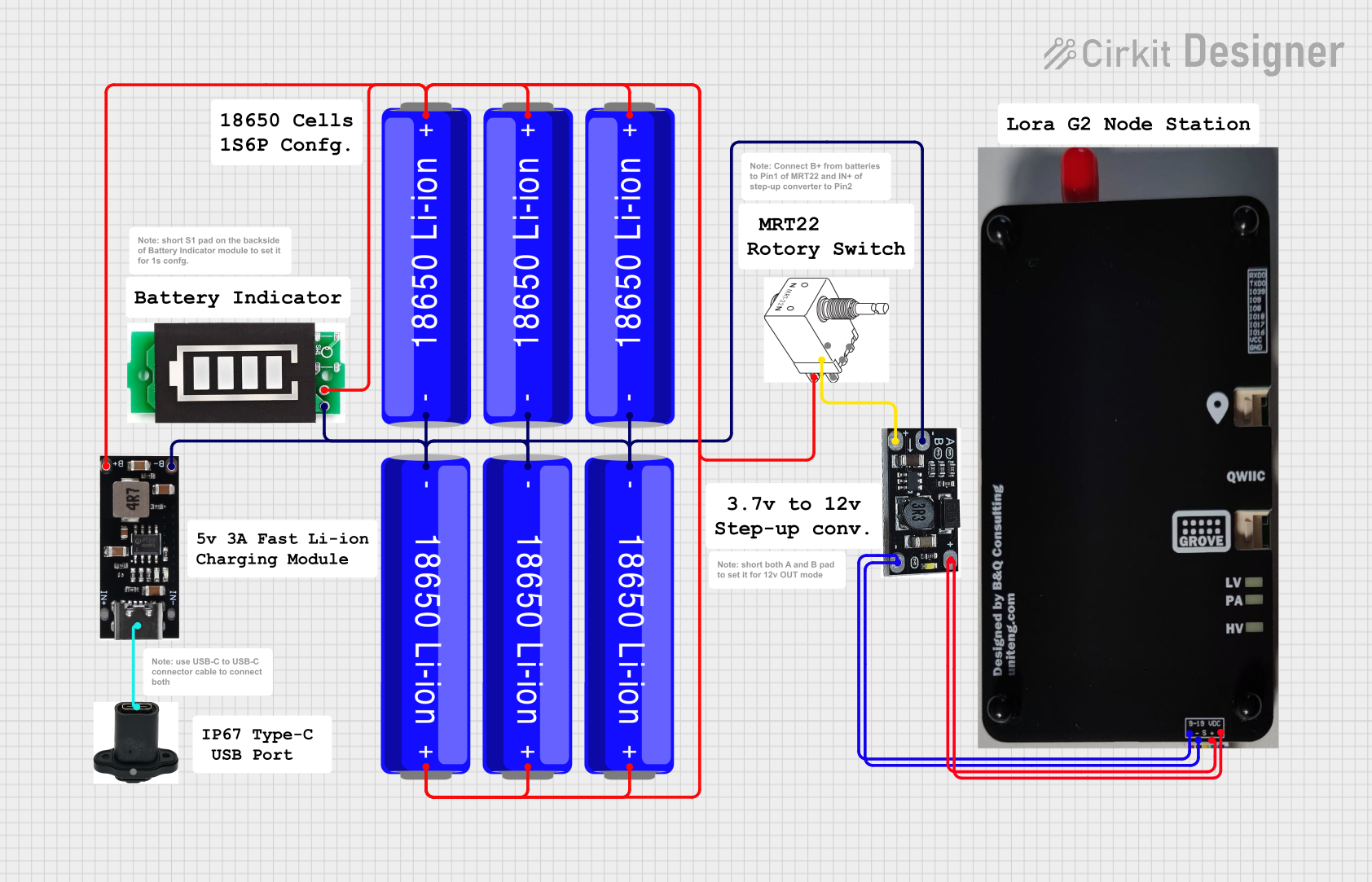
 Open Project in Cirkit Designer
Open Project in Cirkit Designer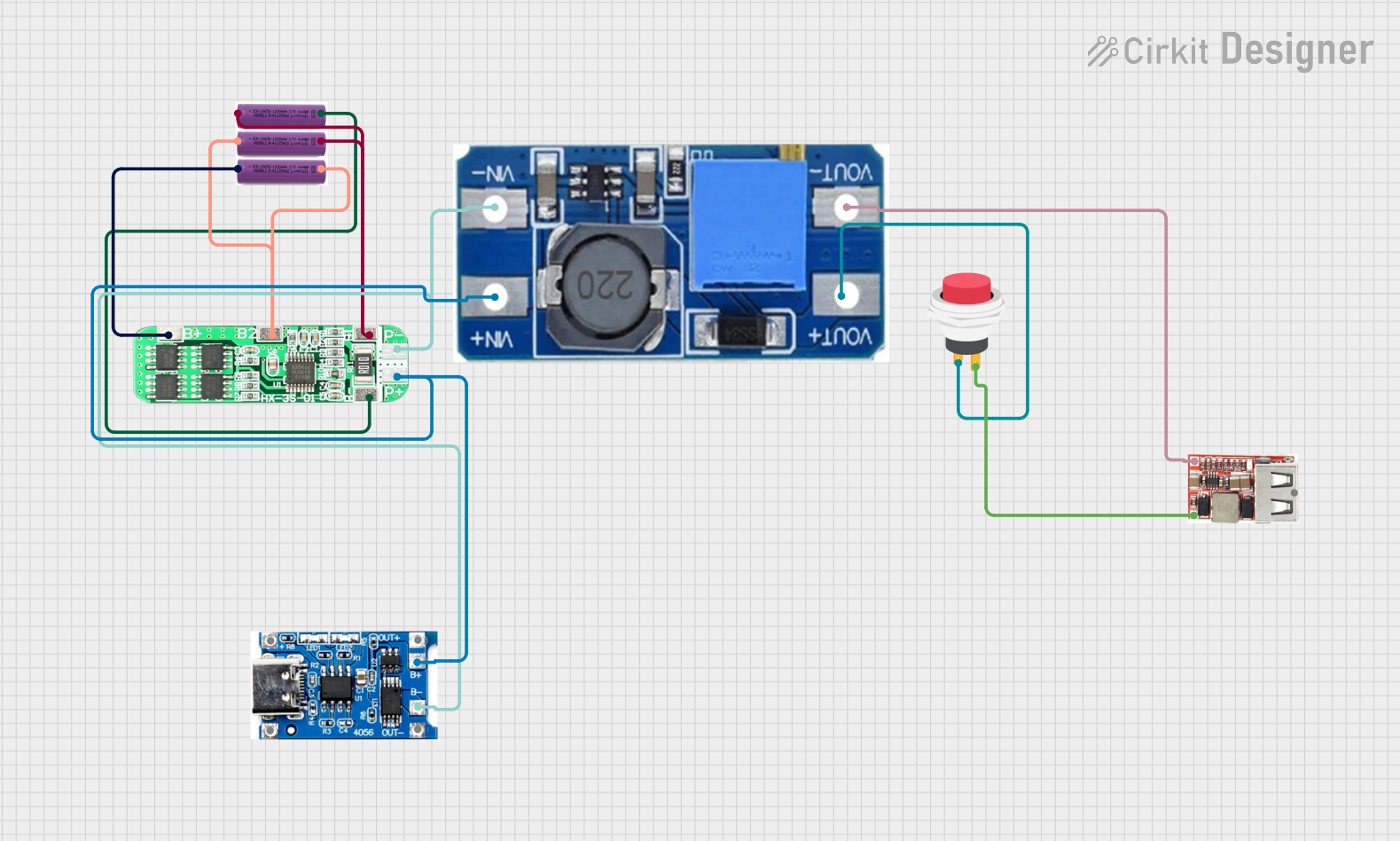
 Open Project in Cirkit Designer
Open Project in Cirkit Designer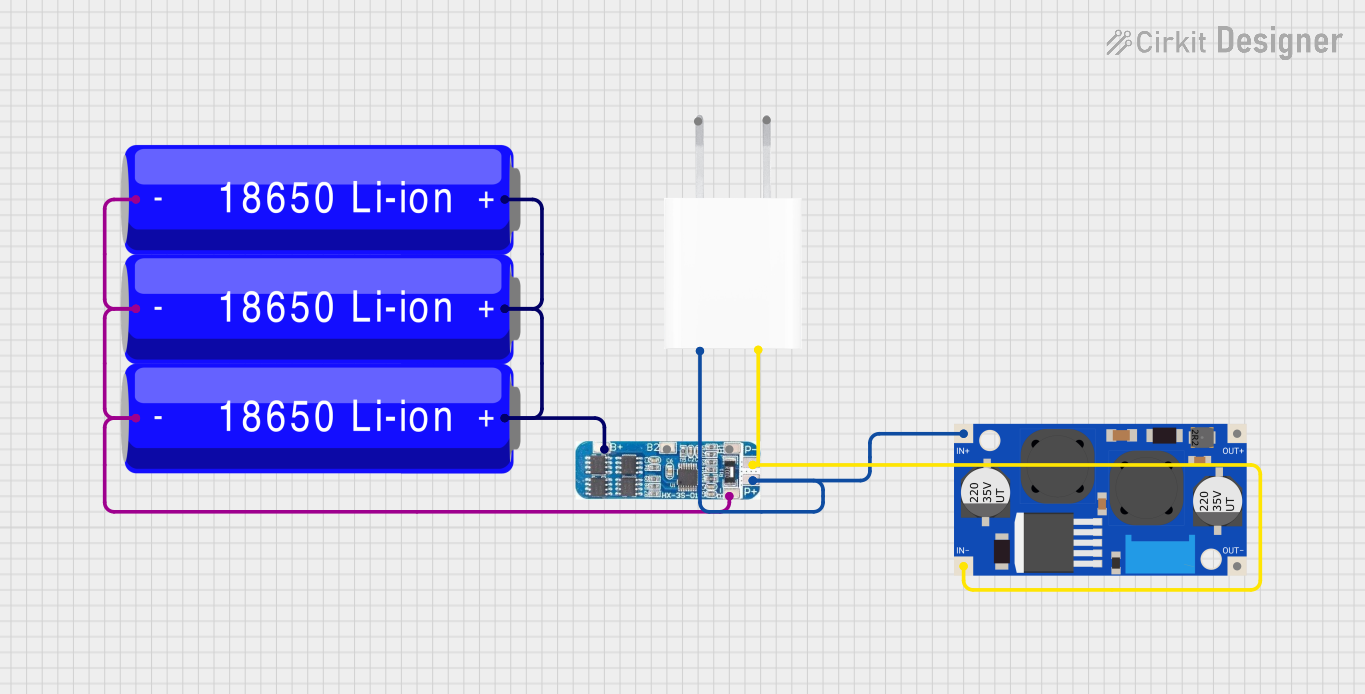
 Open Project in Cirkit Designer
Open Project in Cirkit DesignerExplore Projects Built with LIPO Battery

 Open Project in Cirkit Designer
Open Project in Cirkit Designer
 Open Project in Cirkit Designer
Open Project in Cirkit Designer
 Open Project in Cirkit Designer
Open Project in Cirkit Designer
 Open Project in Cirkit Designer
Open Project in Cirkit DesignerCommon Applications and Use Cases
- Portable Electronics: Smartphones, tablets, and wearable devices.
- RC Vehicles: Drones, remote-controlled cars, and airplanes.
- DIY Electronics: Robotics, IoT devices, and Arduino-based projects.
- Backup Power: Uninterruptible power supplies (UPS) for small devices.
Technical Specifications
The following table outlines the key technical specifications of the PKEnergy LIPO Battery:
| Parameter | Value |
|---|---|
| Nominal Voltage | 3.7V |
| Fully Charged Voltage | 4.2V |
| Capacity Range | 500mAh to 5000mAh (varies by model) |
| Discharge Rate (C) | 1C to 50C (model-dependent) |
| Charging Current | 0.5C to 1C (recommended) |
| Maximum Discharge Current | Up to 50C (model-dependent) |
| Operating Temperature | -20°C to 60°C |
| Weight | Varies by capacity (e.g., ~25g for 1000mAh) |
| Dimensions | Customizable (varies by model) |
Pin Configuration and Descriptions
LiPo batteries typically have two or three wires for connection. The pin configuration is as follows:
| Pin | Wire Color | Description |
|---|---|---|
| 1 | Red | Positive terminal (+) |
| 2 | Black | Negative terminal (-) |
| 3 | Yellow/White | Balance lead (for multi-cell batteries) |
Note: The balance lead is used for charging multi-cell LiPo batteries to ensure all cells are charged evenly.
Usage Instructions
How to Use the LIPO Battery in a Circuit
Connection:
- Connect the red wire to the positive terminal of your circuit.
- Connect the black wire to the ground (negative terminal).
- If using a multi-cell battery, connect the balance lead to a compatible charger.
Charging:
- Use a LiPo-compatible charger to avoid overcharging or damaging the battery.
- Set the charger to the correct voltage and current based on the battery's specifications.
- Always monitor the charging process to prevent overheating.
Discharging:
- Ensure the load does not exceed the battery's maximum discharge current.
- Use a battery management system (BMS) or low-voltage cutoff to prevent over-discharge.
Important Considerations and Best Practices
- Safety: Never puncture, crush, or short-circuit the battery. LiPo batteries can catch fire if mishandled.
- Storage: Store the battery at 3.7V to 3.8V per cell in a cool, dry place.
- Temperature: Avoid charging or discharging the battery outside the specified temperature range.
- Balancing: For multi-cell batteries, use a balance charger to maintain cell health.
Example: Using a LiPo Battery with an Arduino UNO
Below is an example of connecting a LiPo battery to an Arduino UNO using a voltage regulator to step down the voltage to 5V:
// Example: Powering an Arduino UNO with a LiPo battery
// Ensure the LiPo battery is connected to a voltage regulator
// to step down the voltage to 5V for the Arduino UNO.
void setup() {
// Initialize serial communication for debugging
Serial.begin(9600);
Serial.println("Arduino powered by LiPo battery");
}
void loop() {
// Example loop code
Serial.println("Running on LiPo power...");
delay(1000); // Wait for 1 second
}
Note: Directly connecting a 3.7V LiPo battery to the Arduino UNO may not provide sufficient voltage. Use a boost converter to step up the voltage to 5V if needed.
Troubleshooting and FAQs
Common Issues and Solutions
Battery Not Charging:
- Cause: Incorrect charger settings or damaged battery.
- Solution: Verify the charger is set to the correct voltage and current. Inspect the battery for physical damage.
Battery Swelling:
- Cause: Overcharging, over-discharging, or exposure to high temperatures.
- Solution: Stop using the battery immediately. Dispose of it safely following local regulations.
Low Runtime:
- Cause: Battery capacity degradation or excessive load.
- Solution: Check the load current and ensure it is within the battery's discharge rating. Replace the battery if it has degraded.
Voltage Drops Under Load:
- Cause: High internal resistance or insufficient capacity.
- Solution: Use a battery with a higher discharge rate or capacity.
FAQs
Q: Can I use a LiPo battery without a BMS?
- A: It is not recommended. A BMS protects the battery from overcharging, over-discharging, and short circuits.
Q: How do I know when my LiPo battery is fully charged?
- A: A fully charged LiPo battery will have a voltage of 4.2V per cell.
Q: Can I charge a LiPo battery with a standard USB charger?
- A: No, you must use a LiPo-specific charger to ensure safe and proper charging.
Q: How long does a LiPo battery last?
- A: The lifespan depends on usage and care but typically ranges from 300 to 500 charge cycles.
By following this documentation, you can safely and effectively use the PKEnergy LIPO Battery in your projects.